Hello, this is Yamamoto from BAHTERA HISISTEM. Thank you very much for taking time out of your busy schedule to visit us today.
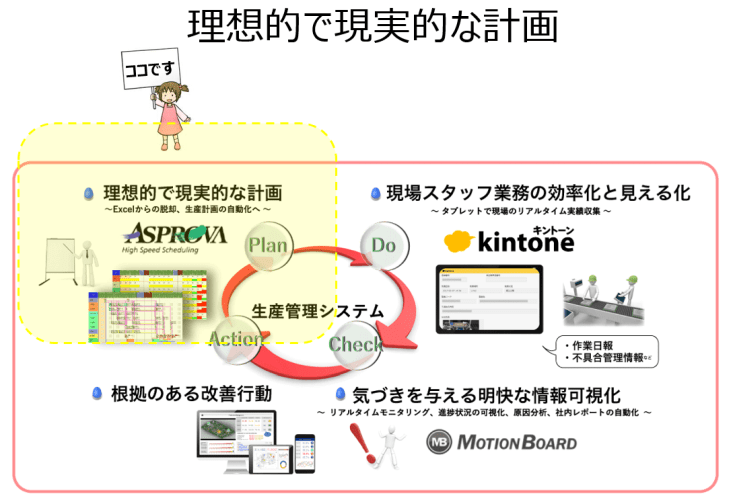
Today, I'll be in charge of the first part of the plan, which is the PDCA cycle of creating production plans with the system, recording manufacturing results with a tablet, and visualizing schedule and results data with a BI tool.
Although my part is mainly related to the manufacturing industry, I think that the information about Cybozu Kin-Tone and Wingark Motion Board, which will be explained after this part, can be applied to the whole business, not just to the manufacturing industry.
There will be no handouts this time, but if you need materials, please check the "materials requested" option on the questionnaire and we will send them to you by email later.
About Us
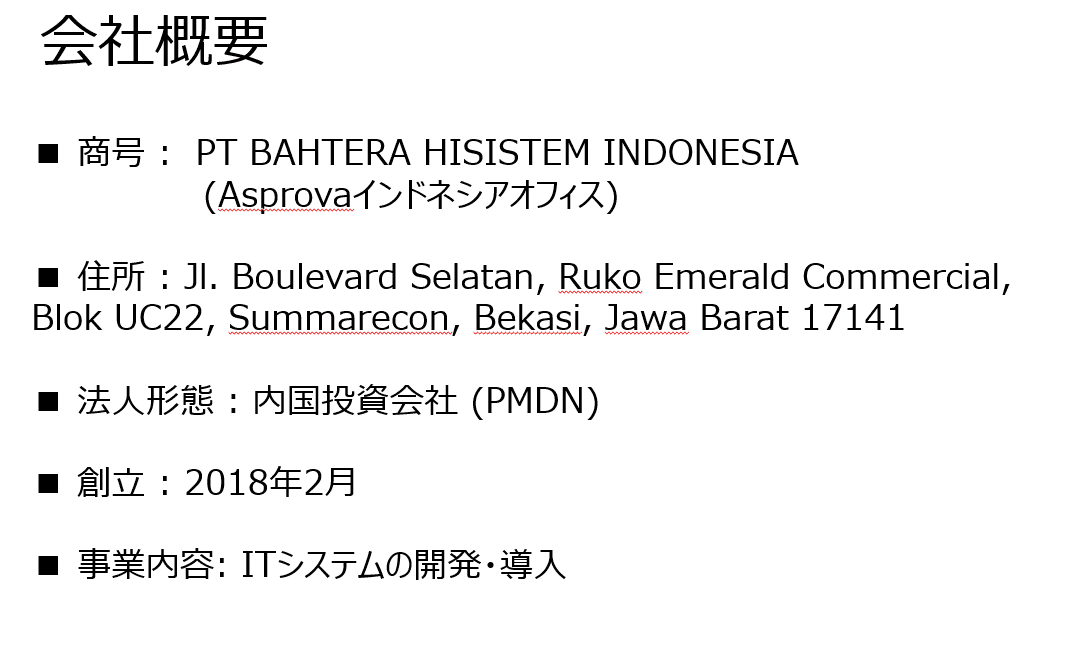 |
Let me give you a brief introduction to the company. Our company is called Battella High Systems and we have an office in Sumarecon, West Bekasi.
I've been working on systems for about 20 years now. |
 |
We are mainly engaged in the systematization of manufacturing systems in general, including production management, inventory control, sales purchasing, production planning, cost accounting, and accounting. |
Challenges Faced by the Japanese Manufacturing Industry in Indonesia in Recent Years
First of all, I would like to take a look at the difficult environment that Japanese manufacturers are in in Indonesia, where "total optimization through visualization" is said to be necessary.
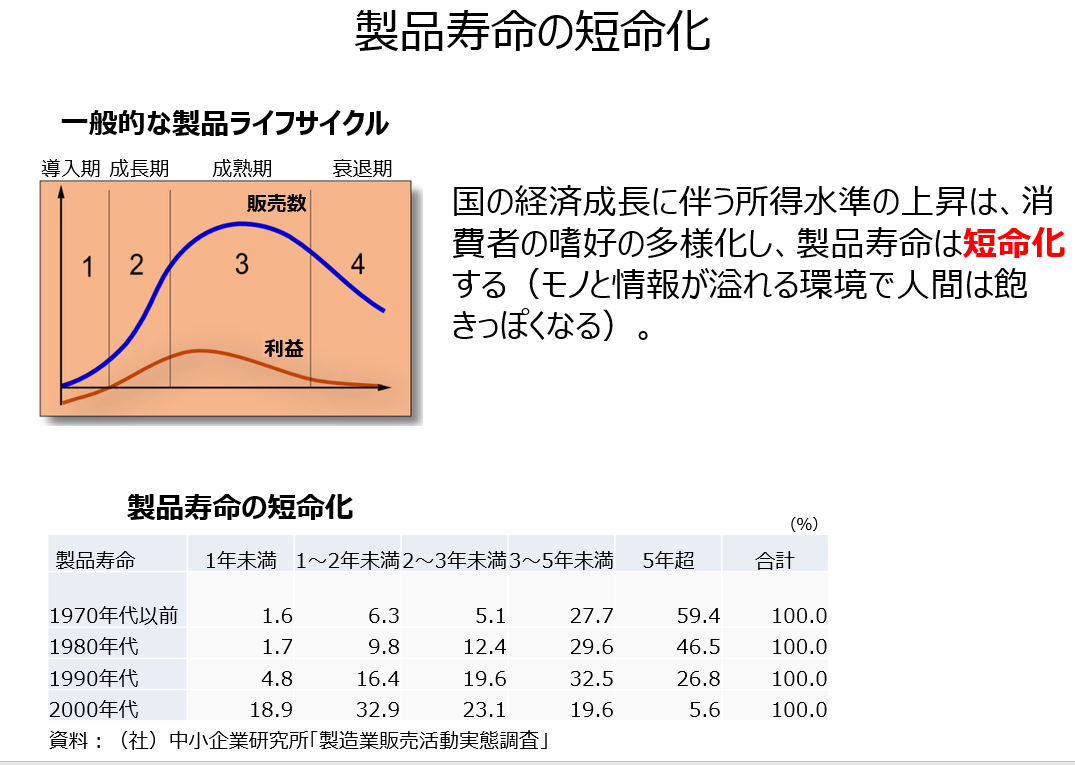 |
I think that the shortening of the product life expectancy is an inevitable event because if Indonesia's economy grows and the income level of consumers rises, the desire to consume will also rise and preferences will diversify and people will become bored.
These days, the salaries of Indonesians have gone up, and when I walk into a restaurant in a shopping mall and see an Indonesian family at the next table ordering a table full of delicious-looking food, I often feel that they all have a lot of money.
From a macroeconomic point of view, Indonesia's economy is often referred to as "moderate growth", but this is because the country's processing technology is low and it is not able to export with added value, so the trade deficit continues.
This is basically an outflow of domestic assets, but I think the growth of the consumer population, which is surplus to the outflow, is slowly driving the growth. |
 |
The shortened product life expectancy requires high-mix low-volume production for manufacturers on the product supply side.
Until about 10 years ago, it was important for many factories to deliver large lots of products to large customers on time.
Recently, however, the ratio of large customers to sales has been decreasing, and it has become difficult to maintain business results without accumulating small-lot orders.
I think this is due to the fact that companies are increasing their local procurement rates, and competition from rivals in other countries, such as China and Indonesia, is becoming fierce. |
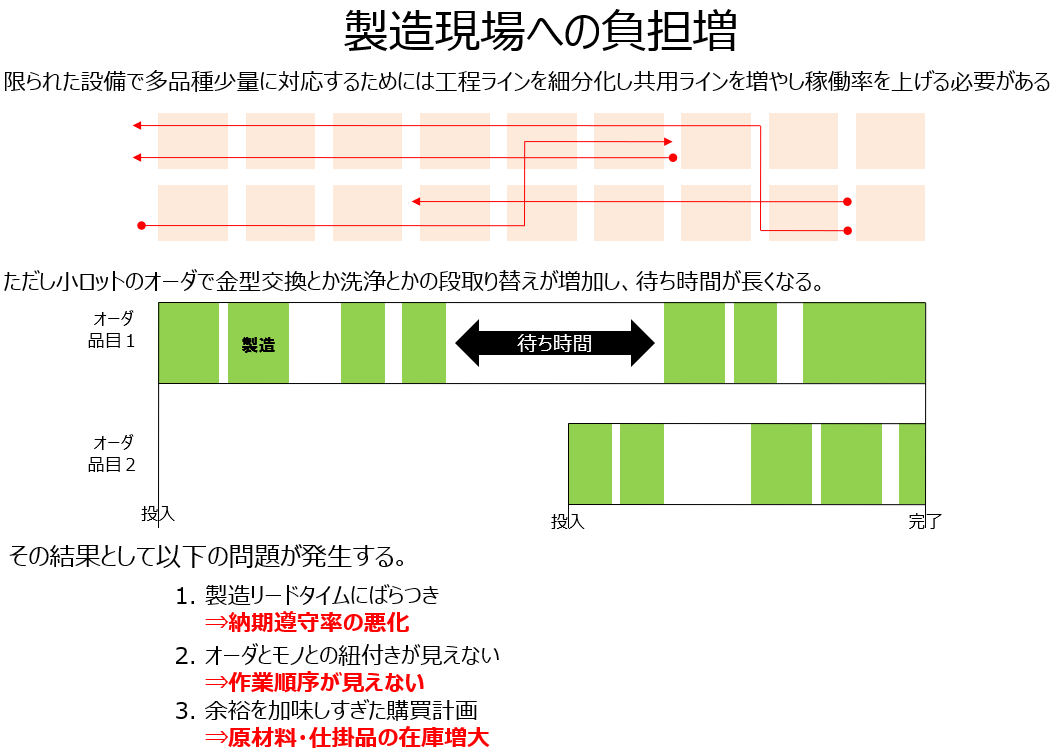 |
When dealing with high-mix low-volume production, it is necessary to increase the number of shared lines by subdividing the process lines in order to increase the utilization rate of limited production equipment.
However, as small-lot production increases, the number of setups such as mold changes and cleaning increases, and the waiting time between processes tends to increase depending on the item, quantity, and how the line is packed.
As a result, the production lead time for each product is uneven and the on-time delivery rate worsens, making it difficult to see the connections between processes and the order of work, and making purchasing plans with too much inventory to prevent line stoppages due to material and material shortages. |
 |
As the number of customers increases, it is only natural that various requests will come up, some customers will ask for unreasonable order changes, and some suppliers will not meet the deadline.
The supply side of the supply chain is called the upstream side of raw materials, and the side closer to the final consumer is called the downstream side. Fluctuations in demand downstream have a ripple effect on the upstream side of the supply chain, and fluctuations in supply from upstream have a ripple effect on the downstream side.
The bullwhip effect is a phenomenon in which the ripple effect becomes larger the further ahead of the flow, which is called the bullwhip effect. |
 |
After the Jokowi government took office in 2014, labor costs continued to rise due to excessive conjecture against labor unions, but recently, with inflation settling below 5%, there seems to be a decrease in demonstrations calling for an increase in the UMP (minimum wage).
Still, the minimum wage here in Bekasi is the highest in Indonesia, nearly double that of Central Java. |
 |
It is said that Indonesia has more than 7 million people employed by Japanese companies, and the country ranks second to Singapore in terms of investment by country.
The second Jokowi administration, which began this year, aims to raise this to 25%, and is promoting the attraction of downstream industries that add value to raw materials. |
Improve productivity by shifting from partial optimization to total optimization
Now, I would like to talk about how Japanese manufacturers should respond to this difficult situation, but here I would like to think about how to improve productivity by shifting from partial optimization to total optimization.
 |
This is the definition of total optimization, but it is the minimization of inventory costs and maximization of profits as a result of maximized production efficiency, lower price costs per unit of time, and reduced inventory.
Here, we exclude factors that cannot be managed by the system, such as market price fluctuations and price reductions due to price negotiations. |
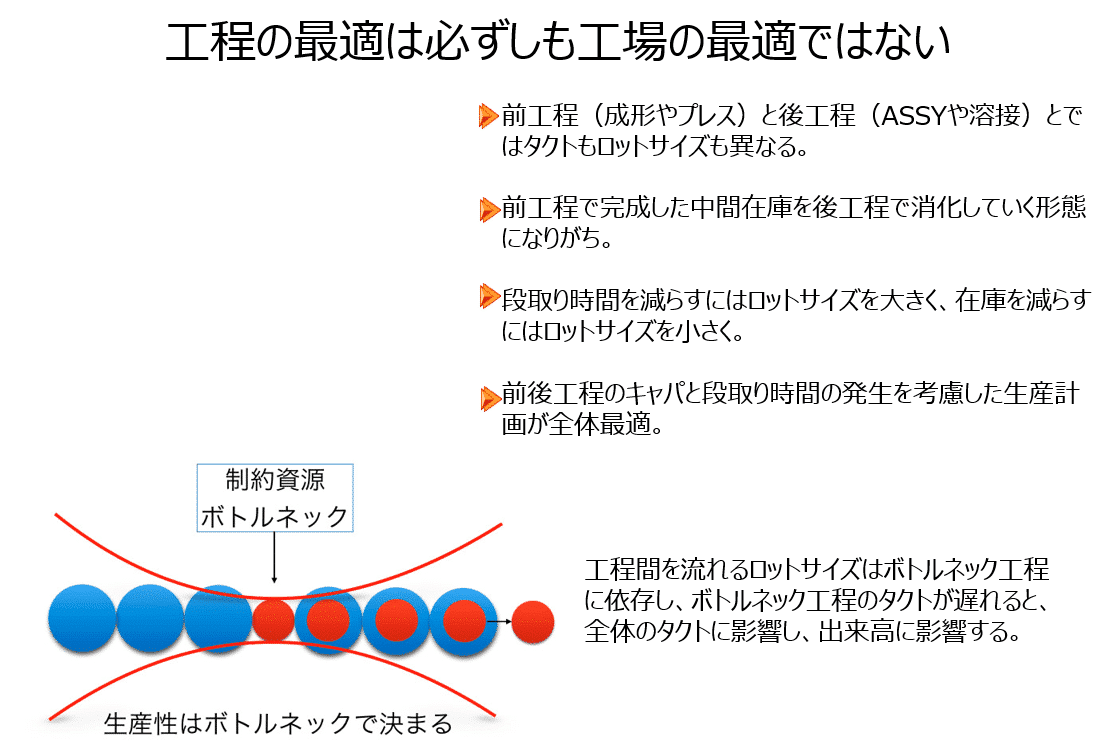 |
In the case of Indonesia, the front-end process is often molding or pressing, and the back-end process is assembly or welding, but because the tact time is different between the front-end process and the back-end process, it basically becomes a production system in which the intermediate inventory manufactured in the front-end process is consumed in the back-end process.
Since the production capacity of the entire plant does not exceed the capacity of the bottleneck process, it is better to adjust the front and back processes so as not to hold inventory and increase waiting time by matching the tact in the front and back processes, rather than just producing more product just because the capacity is high. |
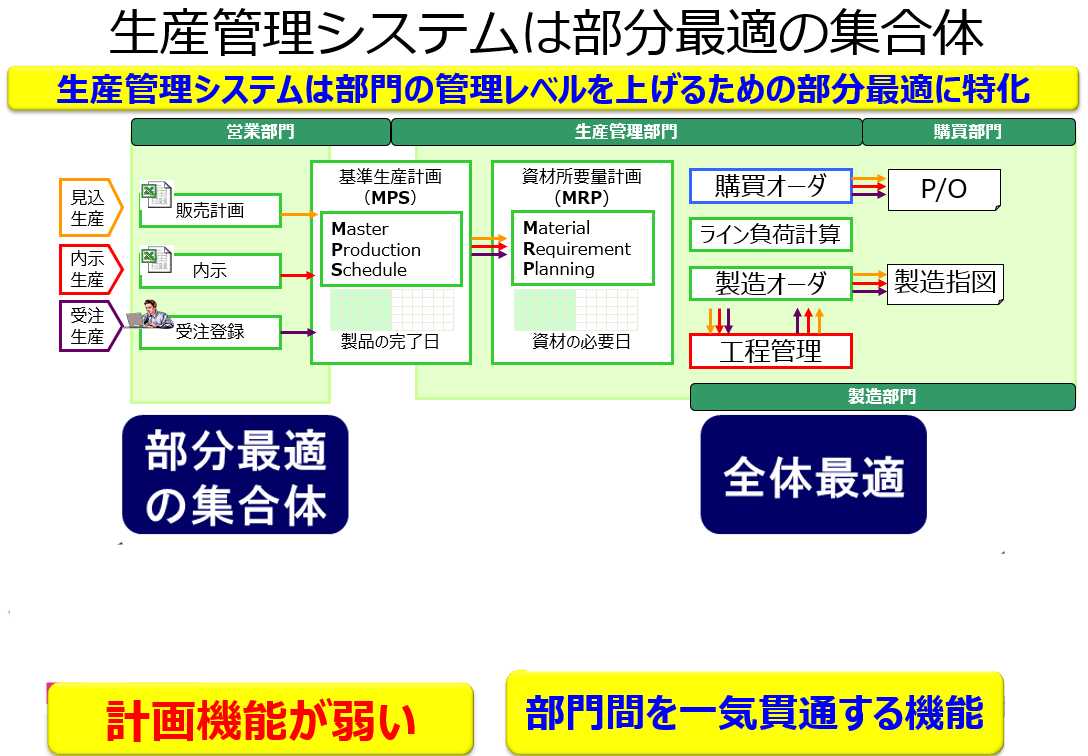 |
Typical production management systems are built on the premise of departmental optimization to increase the level of departmental control.
It's no surprise that production management systems, which are a collection of partial optimizations, have weak planning capabilities that require total optimization.
The ability to create interdepartmental plans across the board is necessary for overall optimization. |
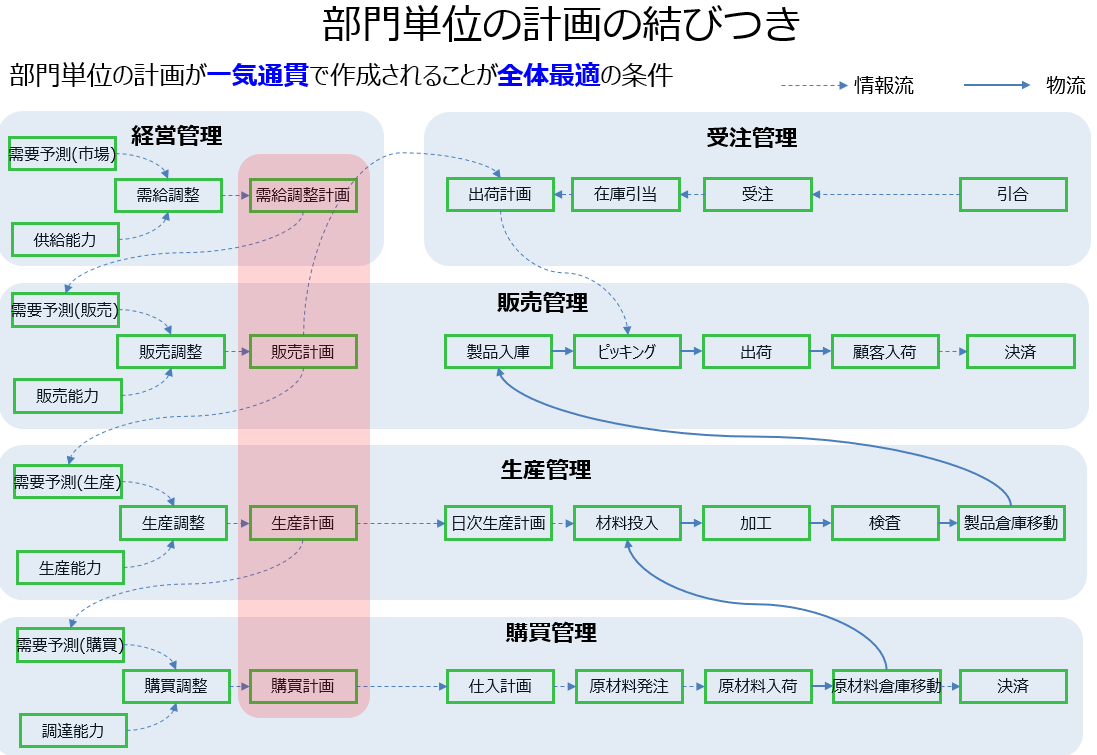 |
Within your company, departments such as sales, production and purchasing hang under your management, but plans are made based on the demand and supply for each department.
The key to overall optimization is that departmental plans are created across the board. |
 |
Longer lead times due to inter-departmental waiting times means that products stay in the warehouse, which means they take longer to ship and turn into sales, which in turn costs you more inventory.
If work flows according to a synchronized plan across departments, there will be less time dwelling in the company and inventory costs will be lower. |
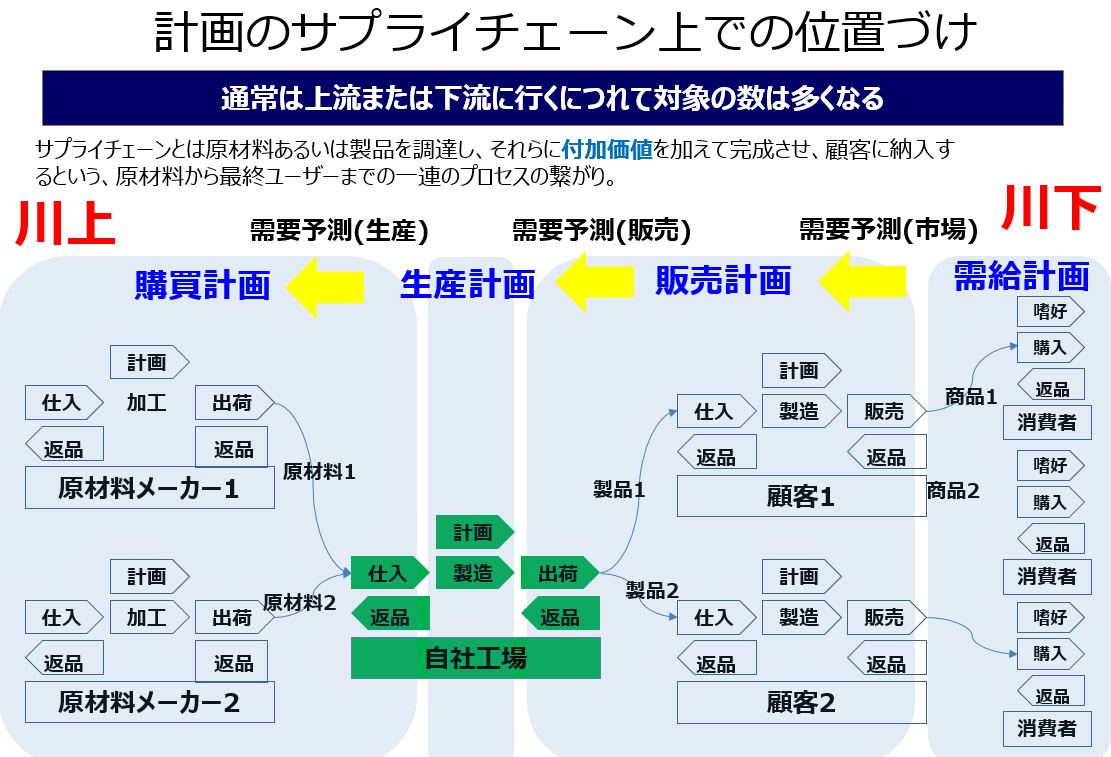 |
The plan I mentioned earlier is a plan for how the supply chain, centered on the company's own factories, will flow products and information with added value from raw material manufacturers upstream to end consumers downstream to conduct economic activities. |
Inventory costs and opportunity loss risk
In order to achieve overall optimization, it is necessary to plan for each department in a single step, and this is the way of thinking that inventory costs and the risk of opportunity loss are lowered to achieve proper inventory.
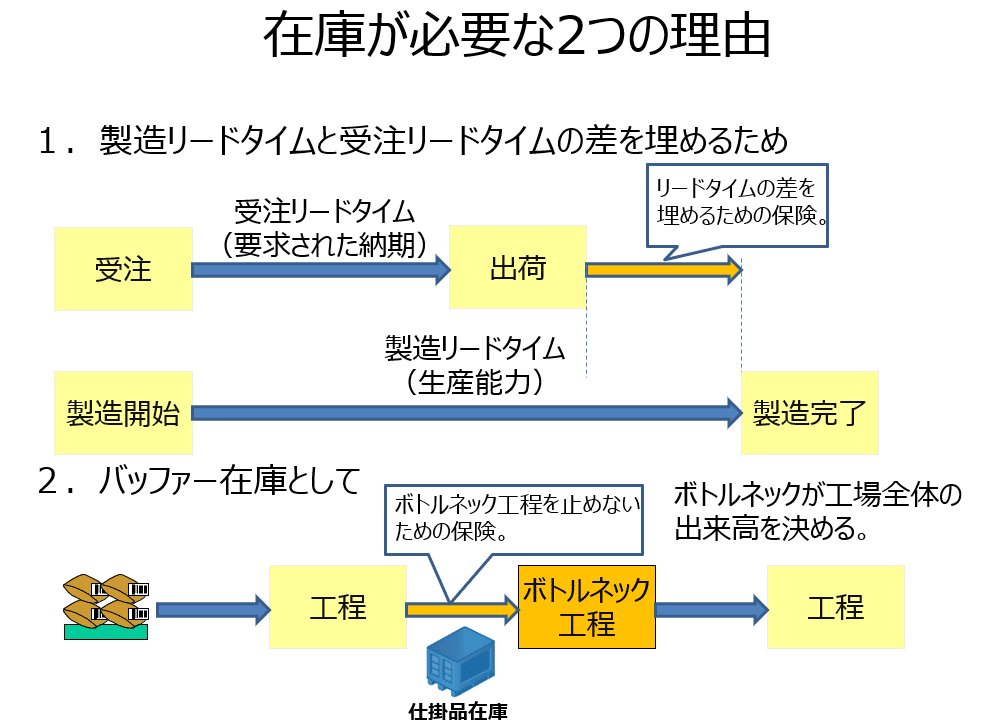 |
Inventory has the meaning of insurance to make up the difference between order lead time and manufacturing lead time, i.e., inventory for a product that takes 10 days to manufacture because it cannot be shipped in 5 days.
In other words, the productivity of the entire plant is determined by bottlenecks, so maximizing these bottlenecks has the meaning of inventory. |
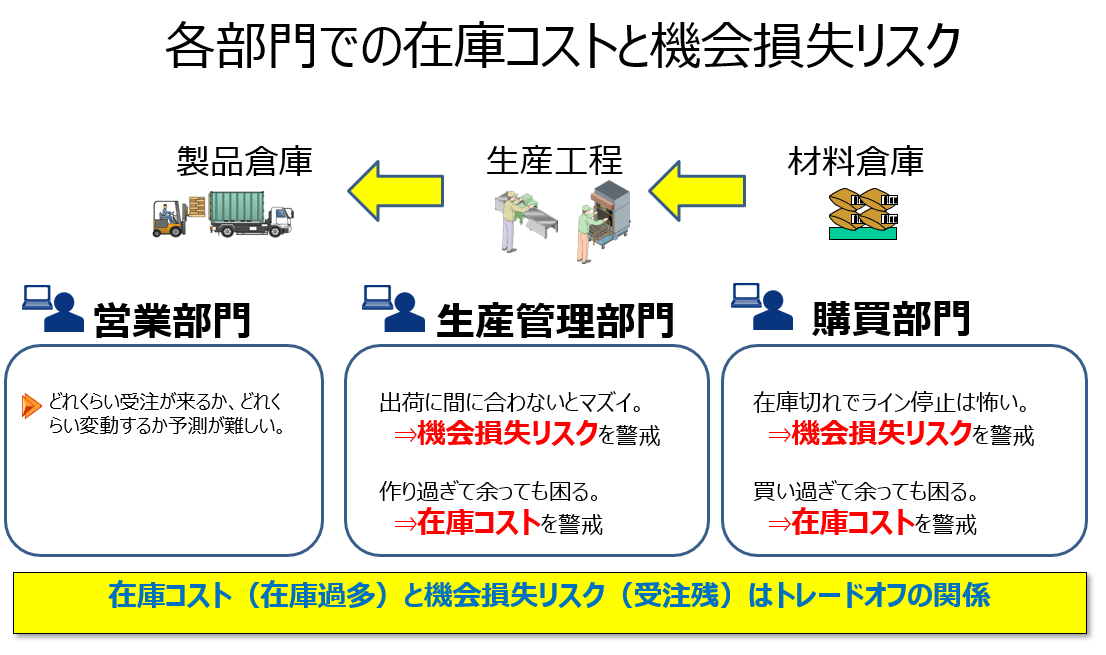 |
Each departmental representative works with an inventory cost and opportunity loss risk mindset.
There is a trade-off between inventory costs and the risk of opportunity loss: "If you stand in front of them, they won't stand in front of you. |
 |
The cost of value added in the supply chain is the cost of the product to be accounted for, but there is also an off-balance sheet of interest due to inventory held in the company.
It is a hypothetical value and a lost opportunity to see how much could have been spent and how much revenue could have been generated if the inventory had originally been held internally as cash. |
 |
Product costs include cost of sales, which is determined by the number of products shipped that have a value equivalent to the manufacturing cost (unit manufacturing cost), which is the value of the product itself, and SG&A expenses, which are expenses incurred in order to sell the product.
Inventory depletion and warehouse rentals, which are part of SG&A expenses recorded in accounting, are both product costs and interest incurred due to the presence of inventory. |
 |
To estimate the interest rate generated due to the presence of inventory, the cash flow-based approach is to add the period during which raw materials, work in process, and products are held in the company until the collection of accounts receivable, minus the grace period for payment of accounts payable for raw materials.
This inventory cost is an off-balance sheet liability that is not reflected in the B/S. |
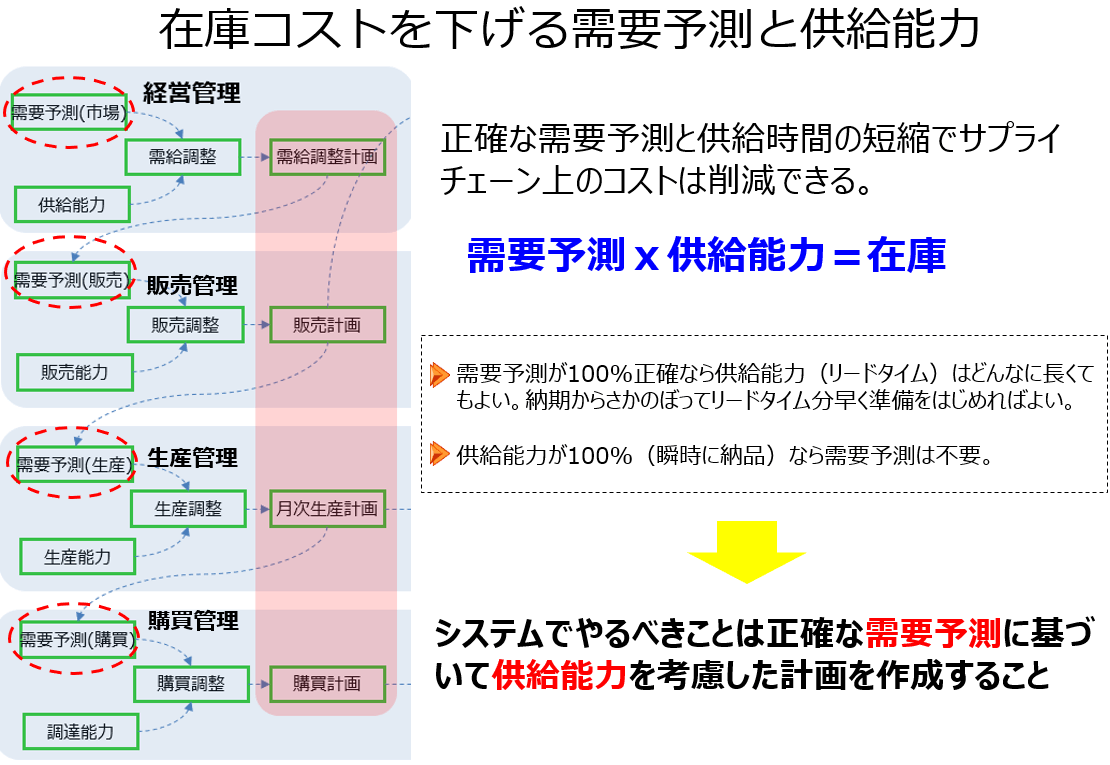 |
If there is a case where zero inventory is okay, either the demand forecast is 100% correct and can be produced with sufficient lead time, or there is 100% supply capacity to supply instantaneously to demand, so inventory is determined by the accuracy of the demand forecast and the high supply capacity.
All that needs to be done in the system is to create a plan that takes into account supply capacity based on an accurate demand forecast. |
A system to create an overall optimized plan
Now, let me explain the systemization procedure to realize "total optimization through visualization".
 |
Let me explain what the system is to maximize productivity, lower price costs, shorten manufacturing lead times, and lower inventory costs.
The flow of how plant planners make production plans is the same everywhere. They receive orders and informational information from sales, summarize it in Excel, create a production plan with a view to shipping, calculate the required number of parts and raw materials to be manufactured in the process based on the parts composition chart, calculate the net required quantity after subtracting the inventory, create a production schedule that shifts the lot for each process by the number of days of production lead time, and smooth out the production quantity on days of overload. |
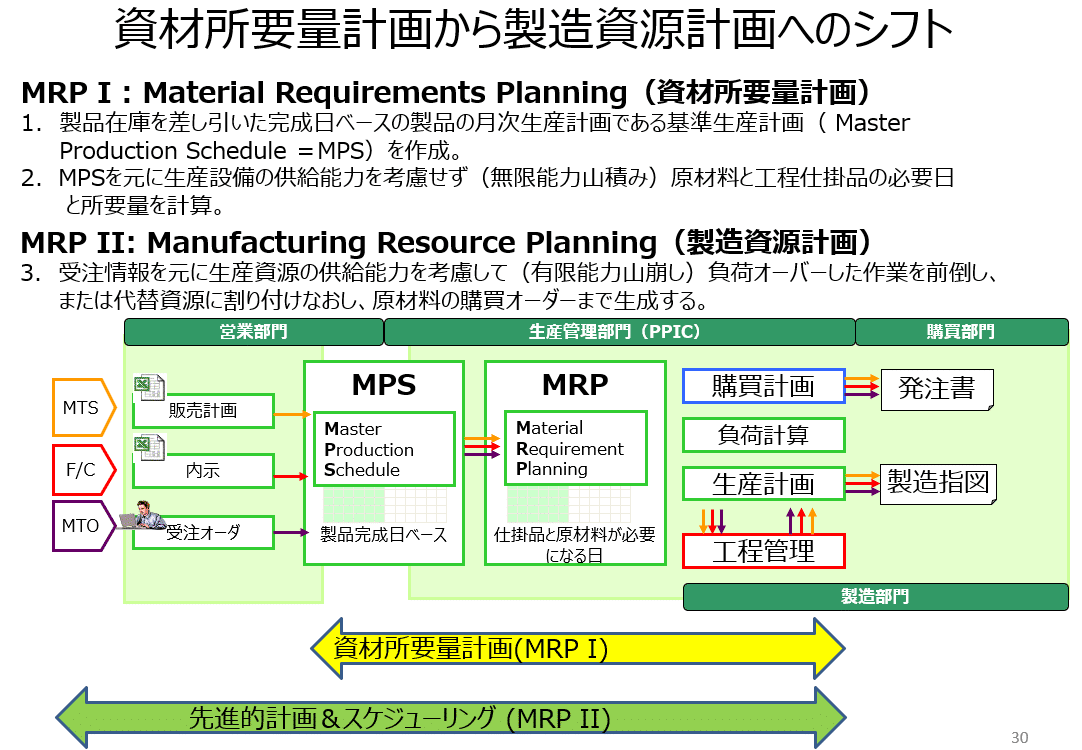 |
In a general production control package system, the requirements are expanded by the material requirement planning (MRP) function based on the order information, and the manufacturing order for each process is created, and the amount of raw materials ordered is calculated.
In this case, it is possible to place a manufacturing order that does not take into account the equipment capacity of each process, so the part of the process that exceeds the capacity must be allocated to the vacant days, but when the number of products and equipment is large, this is not a task that can be done manually.
The ability to automatically allocate overload work to free days and other facilities in the system, taking into account the equipment capacity of the process, and even generate purchase orders is called Manufacturing Resource Planning (MRPII). |
 |
This is the image of manufacturing resource planning (MRPII), which manages the entire process from order receipt to production and purchasing, improving productivity per unit time by shortening lead times and reducing inventory costs by reducing inventory.
The ability to automatically generate production plans while achieving overall optimization is known as APS.
In Japanese it would be "advanced planning and scheduling", but with APS the overall optimized production schedule is visualized in the context of the processes. |
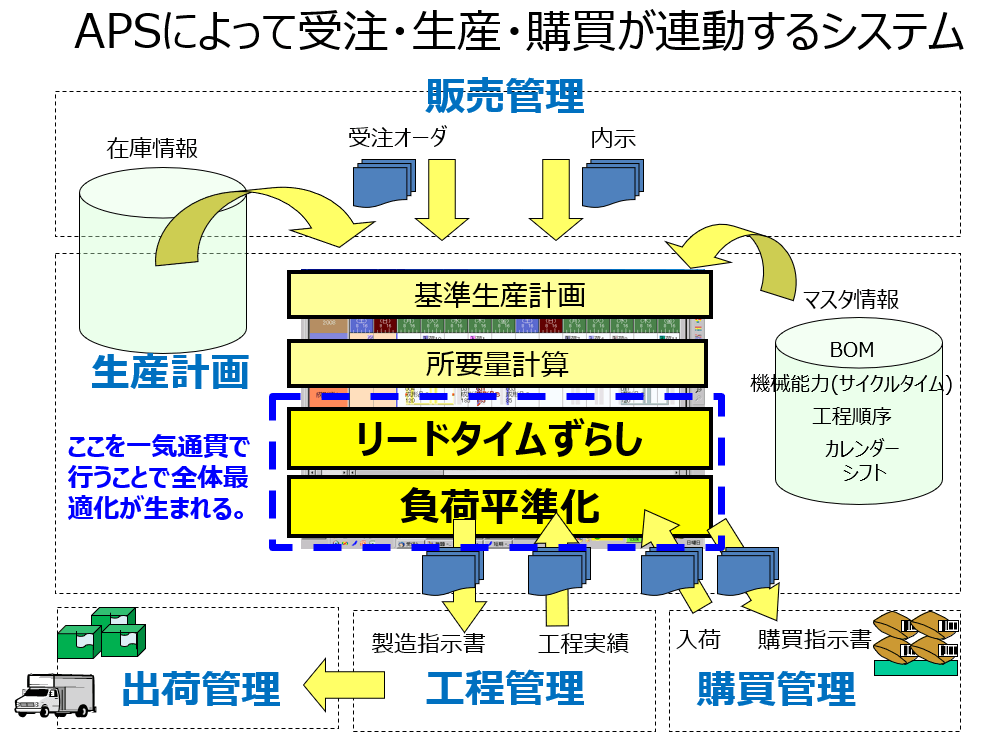 |
APS is the movement of the management system from order receipt to production and purchase in a single process.
At the same time, we allocate manufacturing orders to facilities to ensure that they do not exceed the capacity of the facility, and issue purchase orders in time to meet the manufacturing start date.
APS performs this series of operations at once. |
 |
APS sets a cycle time rather than a fixed lead time for equipment capacity, as is the case with production management systems, so a cycle time based production plan is created that takes into account the capacity of the machine, resulting in shorter manufacturing lead times.
In this case, a plan can be made to reduce the number of changeovers by manufacturing the same item in succession, with set-up times for mold changes and tank cleaning.
Shortened production lead times lead to higher productivity per unit time, which in turn reduces product costs. |
 |
Shorter production lead times automatically reduce the amount of inventory held in the process, which in turn reduces inventory costs.
As a result, the longer you can have in cash, the better your company's cash flow will be. |
Features of the Production Scheduler
Finally, we will be introducing the Asprova production scheduler.
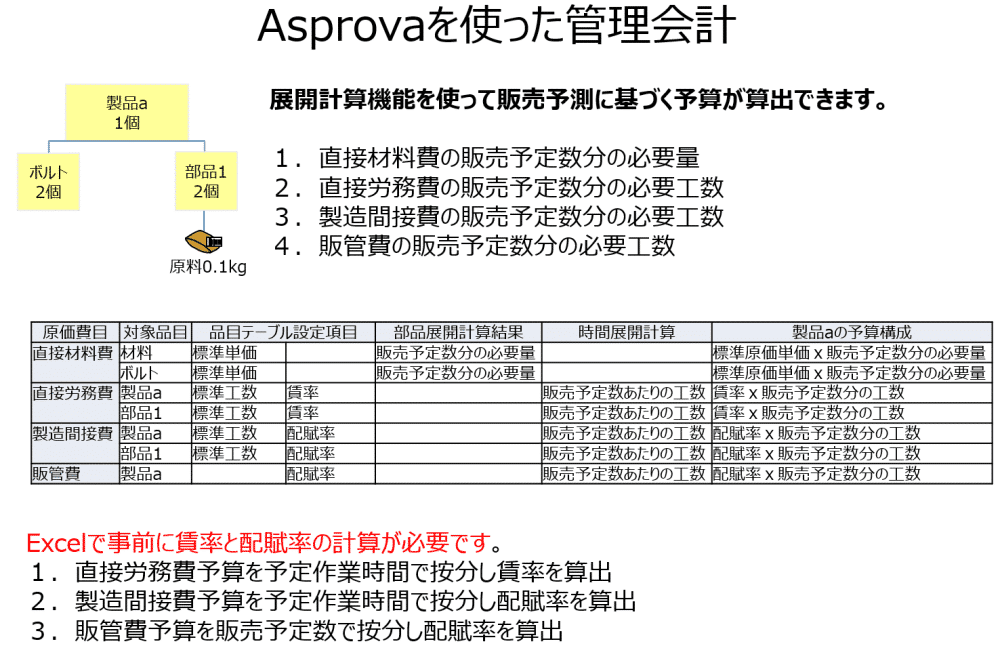 |
Since Asprova can perform expansion calculations, it is possible to set the standard unit price of materials, labor cost rates and efficiencies, and manufacturing overhead cost allocation ratios in the item master, and then calculate a cost budget and sales budget for the next season based on the expected production volume of the product. |
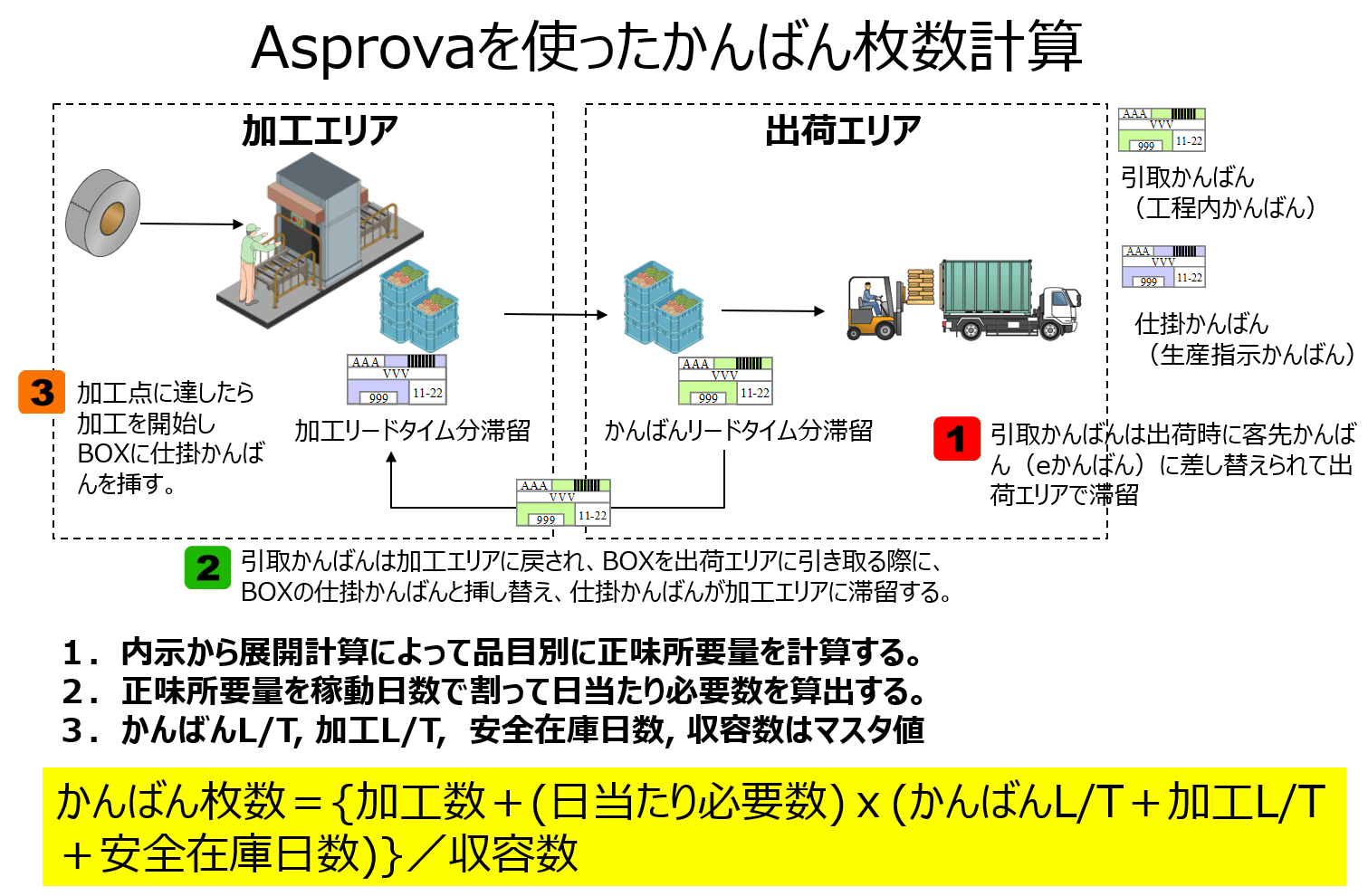 |
In Indonesia, where parts are delivered to TIMMIN and ADM, the production line is also simple and flows well.
Calculating MRP requirements based on the unofficial notice is the same as calculating the number of kanban sheets based on the unofficial notice, so it is possible to update the number of kanban sheets in Asprova every month and increase or decrease the number of kanban sheets flowing in the field. |
Today we are going to talk about the Asprova production scheduler, but in the case of our company we don't want to put the "introduction of the system" too high up on the agenda, and just like Excel we have a policy of making small improvements and letting it permeate the work site, so basically it is possible to introduce it according to the customer's budget.
































